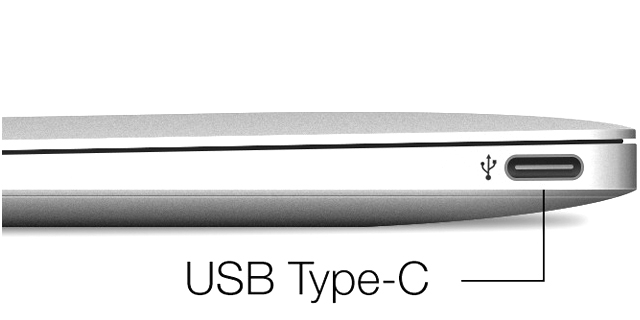
On March 9, 2015, during a special Apple event held at Yerba Buena Center in San Francisco (CA), Phil Schiller, the Senior Vice President of Apple’s Worldwide Marketing, introduced the newest features with which the new MacBook is endowed.
According to him, the USB-C has been designed to change absolutely everything you thought you knew about USB cables.
Introduced earlier this week, the new and thin MacBook produced by Apple has already raised expectations. And, perhaps, the feature that has made a lot of noise is the notebook’s two-pound singular port, capable of supplying the peripheral connectivity and all the power required by this amazing 12-inch laptop. If we leave aside the lack of outlets, USB-C ports reveal a radical change in the future of power and computing.
According to Jeff Ravencraft, the president of USB Implementer – a non-profit group to which more than 700 companies operating in the advancing USB technology have already adhered – , the USB technology has slowly developed into a unique source, able to deliver simultaneously audio, video, data and power, all by using a single connector and cable.
While designing the new USB-C port, engineers concentrated on 3 key features: convenience, performance, and power. As far as the data performance is concerned, USB-C cables have the potential to deliver 20 gigabits per second. However, for now, we have to limit ourselves to 10 gigabits per second. The USB-C’s predecessor, USB 3.1, is also able to reach up to 10 gigabits per second. However, the smaller Micro-B connectors with which many smartphones are endowed are only able to handle half as much. When it comes to power, this new and much smaller connector is able to reach 100 watts. By comparison, the Lightning cable produced by Apple is capable of charging iPhones and iPads with 12 watt chargers, while the power adapter of the Macbook Pro MagSafe can pull 85 watts from a wall outlet. As far as the convenience aspect is concerned, USB-C cables are the first really reversible USB cables. This means that, similar to the Lightning cable produced by Apple, it can be connected either side.
Ever since the original USB was released, people have kept complaining about its one-side-up design, a characteristic that was confounding more than often. While, theoretically, you should be able to insert USB cables into ports correctly 50% of the times, the daily practice shows that almost 100% of the times we connect it upside down. There is no wonder that computer makers thought that the ideal way to get rid of this problem is to design a “universal” USB cable.
However, there is also a bad news. USB-C cables will render obsolete the huge amount of USB cables you have been collecting throughout time. In exchange, you will be able to enjoy a single cord that will rule all your gadgets: keyboards, USB-charging Bluetooth speakers, your fitness band, and all your USB-to-AC power plugs. Hunting for mini-USB cables will become history.
